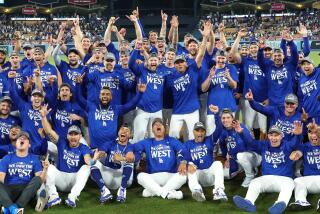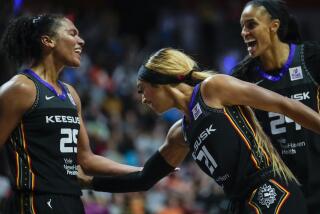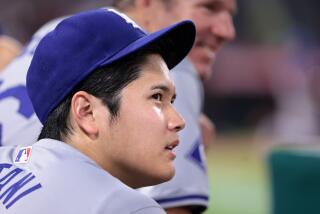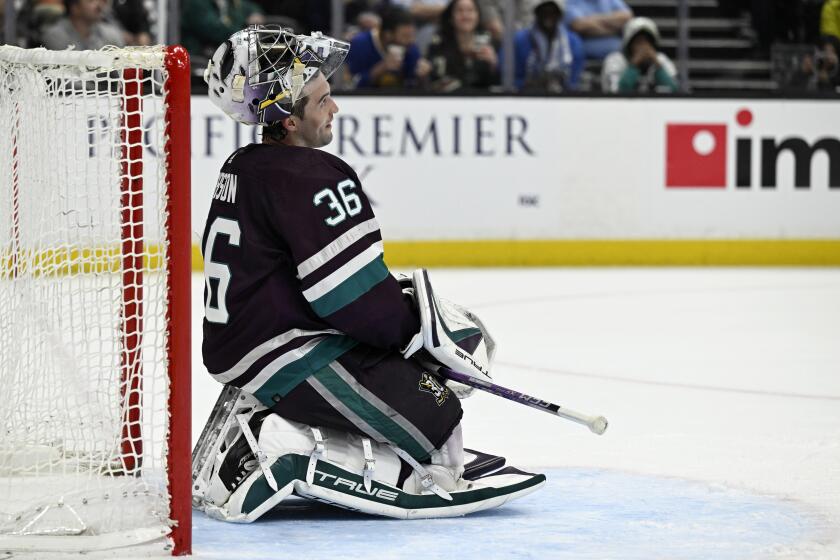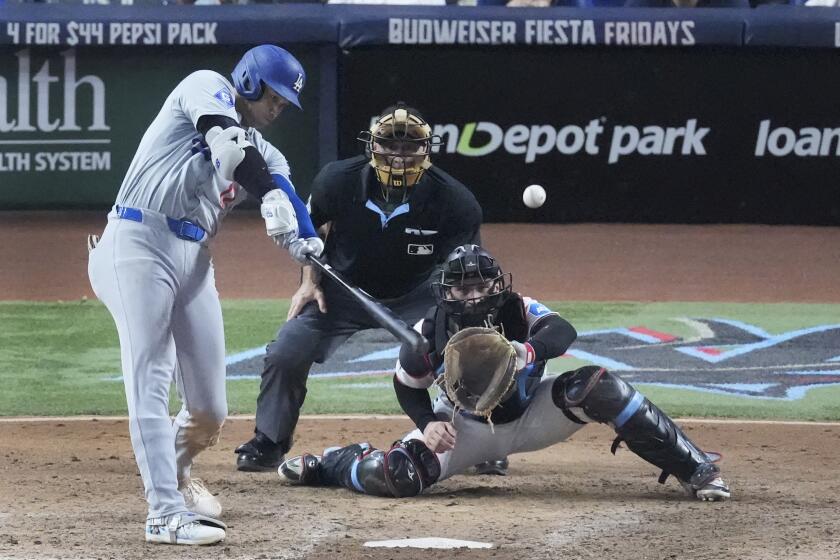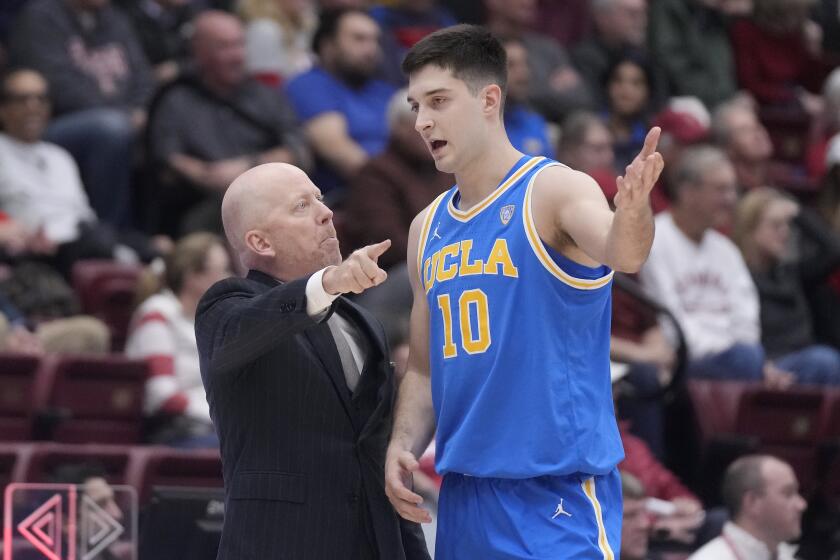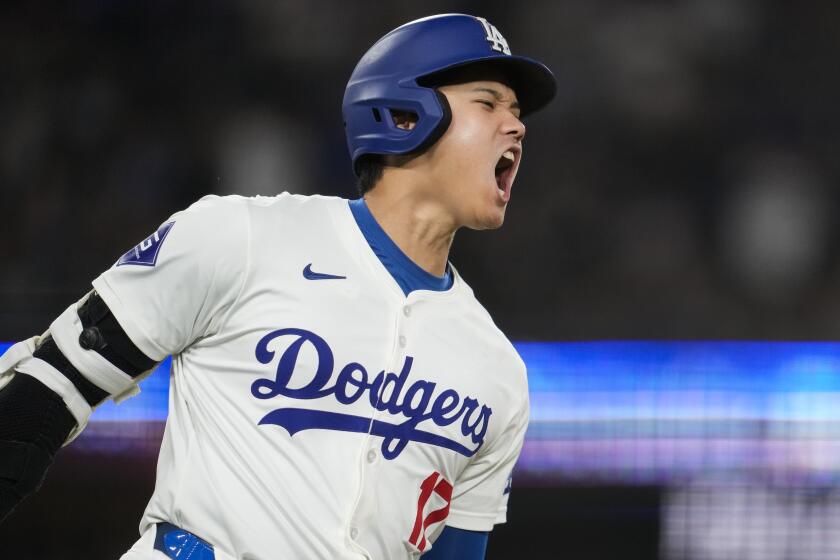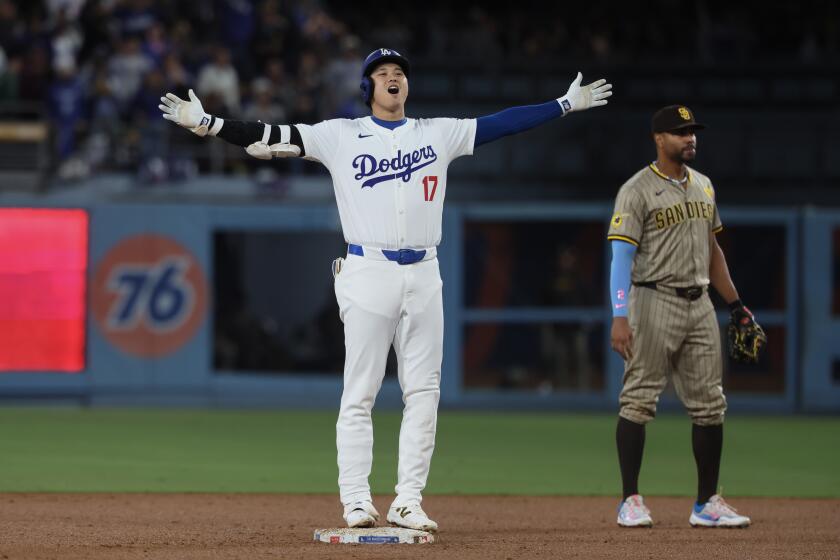Radical Realignment Is Low, Outside Curve Ball
While driving in a night rain in the eastern Pennsylvania coal mountains, a Philadelphia high school teacher and author named Bill Kashatus said he had had it with baseball. He had been to visit the old one-armed outfielder for the St. Louis Browns, the cantankerous Pete Gray. His biography of Gray had been a labor of love and proof certain of his passion for baseball.
Even now Kashatus is at work on a book about the Philadelphia A’s of Connie Mack’s glory years. Still, that night in 1994, after the first October in 90 years without a World Series, he said, “They’ve lost me. I’ll do my research on old-time baseball. But they’ve lost me now.” A pox on both their houses, Kashatus said, blaming owners and players for the Lost Season of ’94.
Had Kashatus been just another casual consumer of ballpark hot dogs, that’s one thing. But he’s a gentleman/scholar/fan who let the game become a foundation for his life. For baseball to lose such a devotee is to lose a piece of its soul.
You’d think baseball would learn from a mistake so grievous. But no. Now the fools who run the game are at it again. Now they want radical realignment. The acting commissioner, Bud Selig, avoids the word “radical,” preferring the less scary phrase “significant realignment.” He wants baseball’s Executive Council to present a plan for the owners to consider by next month.
Here’s what radical realignment does: It abolishes the National League and the American League. The names will continue to be used, but with 15 teams moving from their traditional positions, the names would become meaningless. (Imagine an A.L. with the Pittsburgh Pirates and an N.L. with the Chicago White Sox. Yikes!)
The manipulation would junk leagues that have co-existed in spirited rivalry for 97 seasons. In their places would be eight divisions (four each) based on geography, not custom or habit.
If baseball were starting from scratch, there’d be a lot right with such a plan. It makes travel sense; it’s better for television packages if games are played in the teams’ time zone; it gives life to geographic rivalries; and it does for fans what football, basketball and hockey have done for their customers: It brings every team to town.
I made those arguments myself last winter in a column favoring radical realignment. I now have come to my senses. By way of begging forgiveness, I repeat the mournful words of golfer Roberto de Vicenzo the day he signed an incorrect scorecard that cost him a chance for victory in the 1968 Masters. He said, “What a stupid I am.”
As stupid as advocating realignment is, it would be even dumber to actually do it. Yes, placement of teams in geographically defined divisions makes sense. But it is self-destructive for leagues made distinct by real-world history. More than almost any institution in our society, baseball comes with a past that is a living part of its present.
Babe Ruth’s work in 1927 is a standard against which today’s players are measured. Who can name the president of the United States in ‘27, let alone cite his greatest work? We know Ted Williams was the last to hit .400, and that his .406 was achieved 56 years ago. We know Cy Young, born in another century, won more games than any other pitcher.
While changing baseball’s structure would not change those pieces of history, any nibbling away at tradition can only alienate fans for whom baseball is a game better than the rest, a game with unique rhythms that are the product of a century worth of work rather than one more piece of today’s cacophonous SportsWorld.
Passionate baseball fans would say let the NFL be what it is, the greatest television cash cow of all time. Let the NBA provide instant gratification for today’s MTV-addled brats. Let the NHL freeze in its private, icy world.
Baseball has character those leagues only dream of. Political columnist George Will, who sometimes weighs in on important subjects like baseball, cites Tony Gwynn’s pursuit of .400, Greg Maddux’s precision of pitches, Randy Johnson’s domination and Alex Rodriguez’s brilliance as evidence that baseball is “unlike politics, education, popular culture and much else. Baseball is going against the grain of contemporary America by maintaining high quality.”
And yet, Will writes, baseball’s owners seem so uncertain of their game’s appeal that they have created one “novelty,” interleague play, and may soon act on the “stunning miscalculation” of radical realignment: “They are scrambling for gimmicks to entice customers who, these owners evidently think, cannot be attracted, as fans always have been, by what baseball alone among the professional sports has--more than a century of continuity that enables fans to savor Gwynn’s greatness through meaningful comparisons with distant predecessors.”
I love interleague games. N.L. fans should see a Ken Griffey Jr., and A.L. fans should see Barry Bonds. But those games ought to be rare events rather than, as proposed in radical realignment, a full season series of Mets-Yankees, Reds-Indians and Cardinals-Royals.
Radical realignment is a bad idea that would test the loyalty of all fans. And that loyalty already is at the breaking point. (If you think not, call any White Sox fan and ask, “Having Reinsdorf over for dinner?”)
The pitch for radical realignment is a nasty breaking ball low and outside. Baseball needs to wait for a pitch it can hit out of the park. Happily, Bill Kashatus reminds us that baseball is very good about taking pitches. “The designated hitter became part of the American League in 1973,” Kashatus says. “It was first suggested by Connie Mack in 1903.’
If we’re lucky, then, baseball will take a swing at realignment 70 years from now.
More to Read
Go beyond the scoreboard
Get the latest on L.A.'s teams in the daily Sports Report newsletter.
You may occasionally receive promotional content from the Los Angeles Times.
